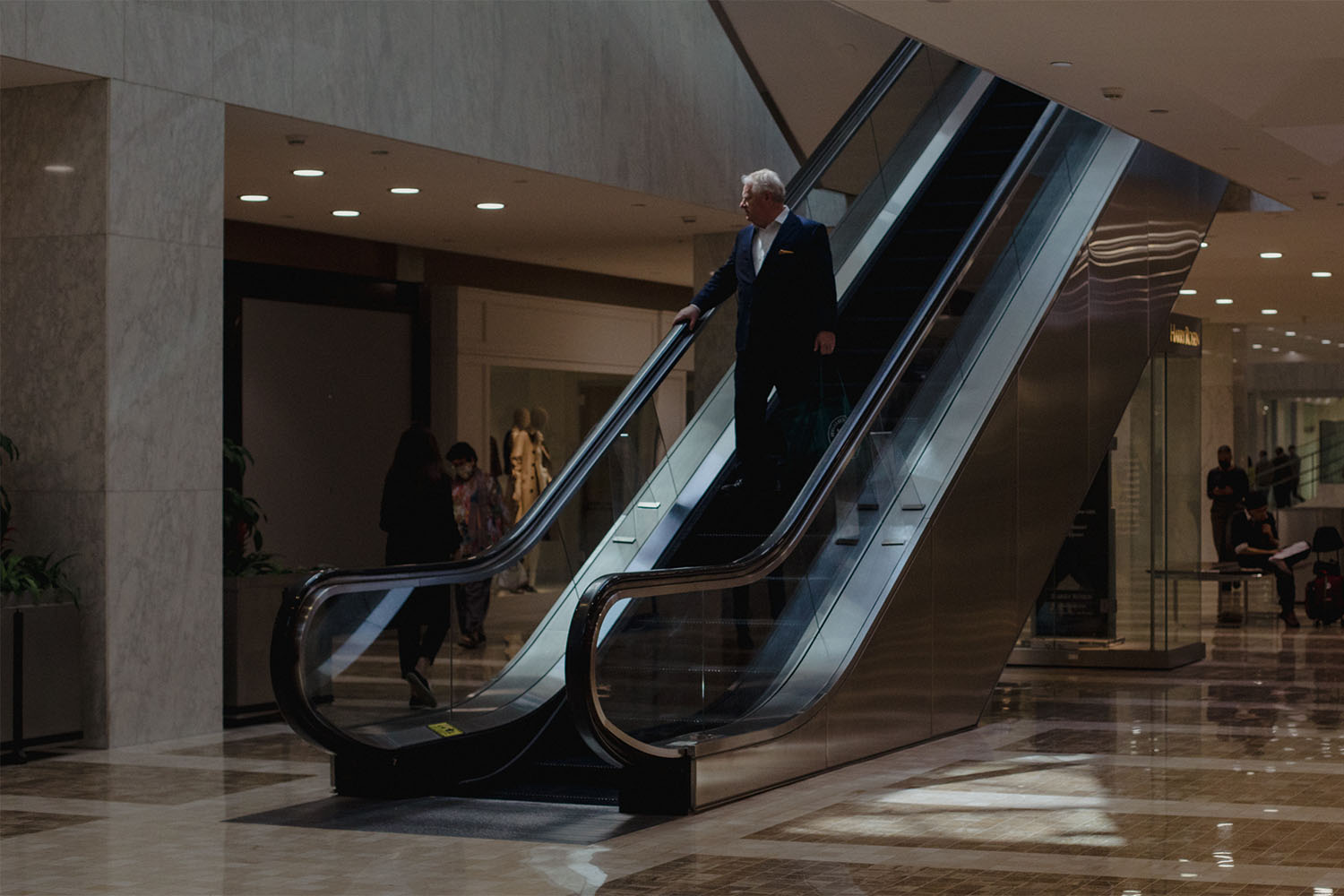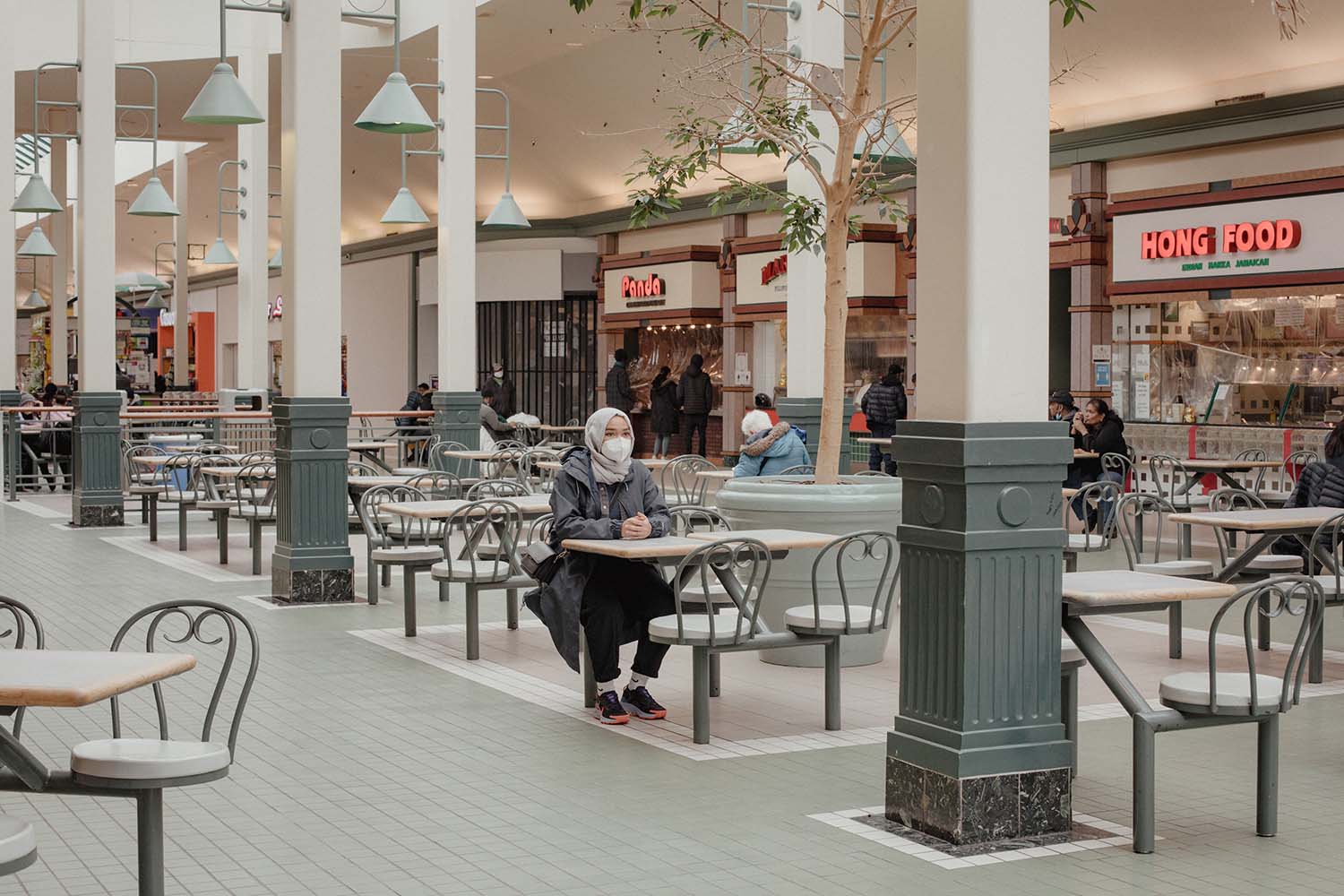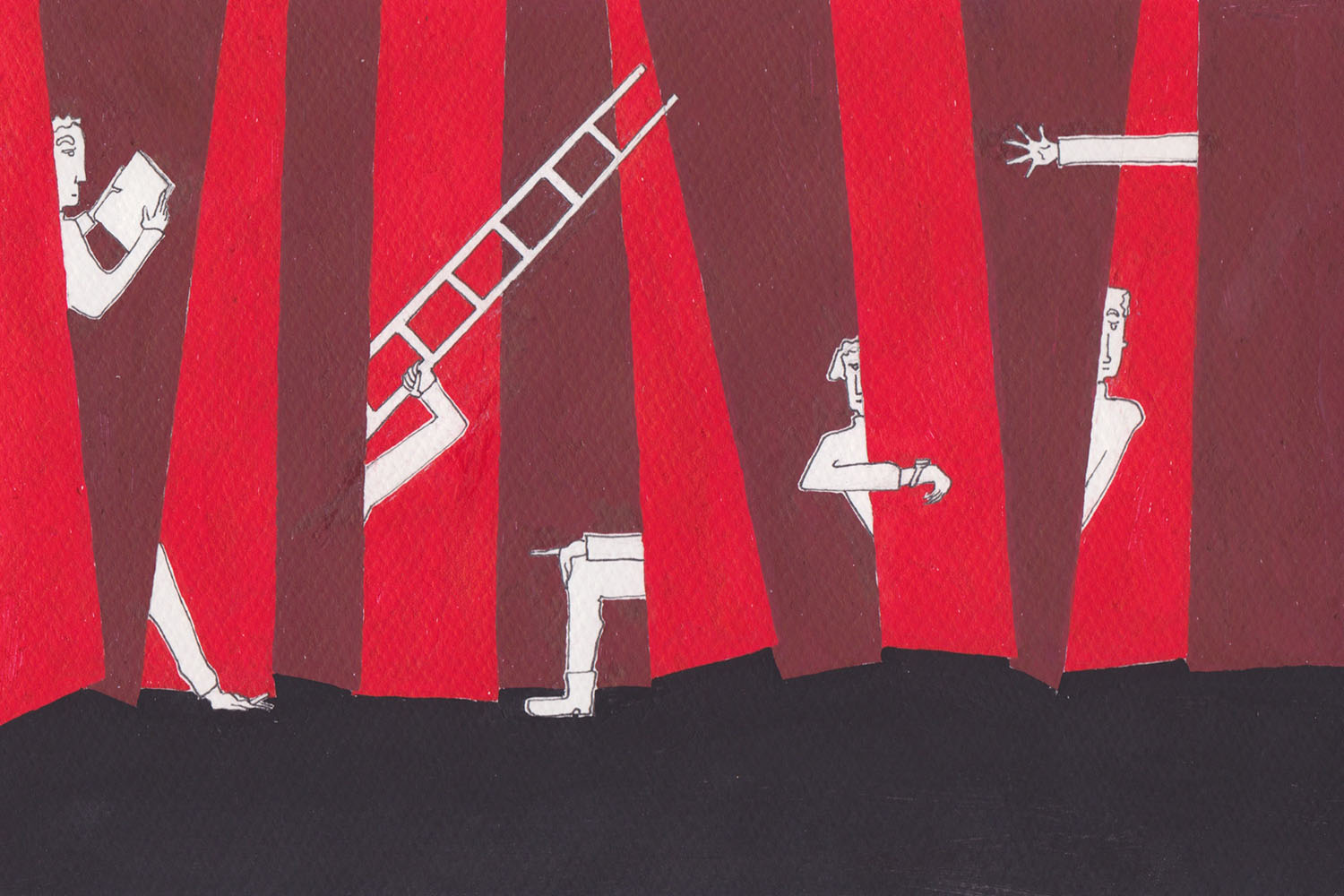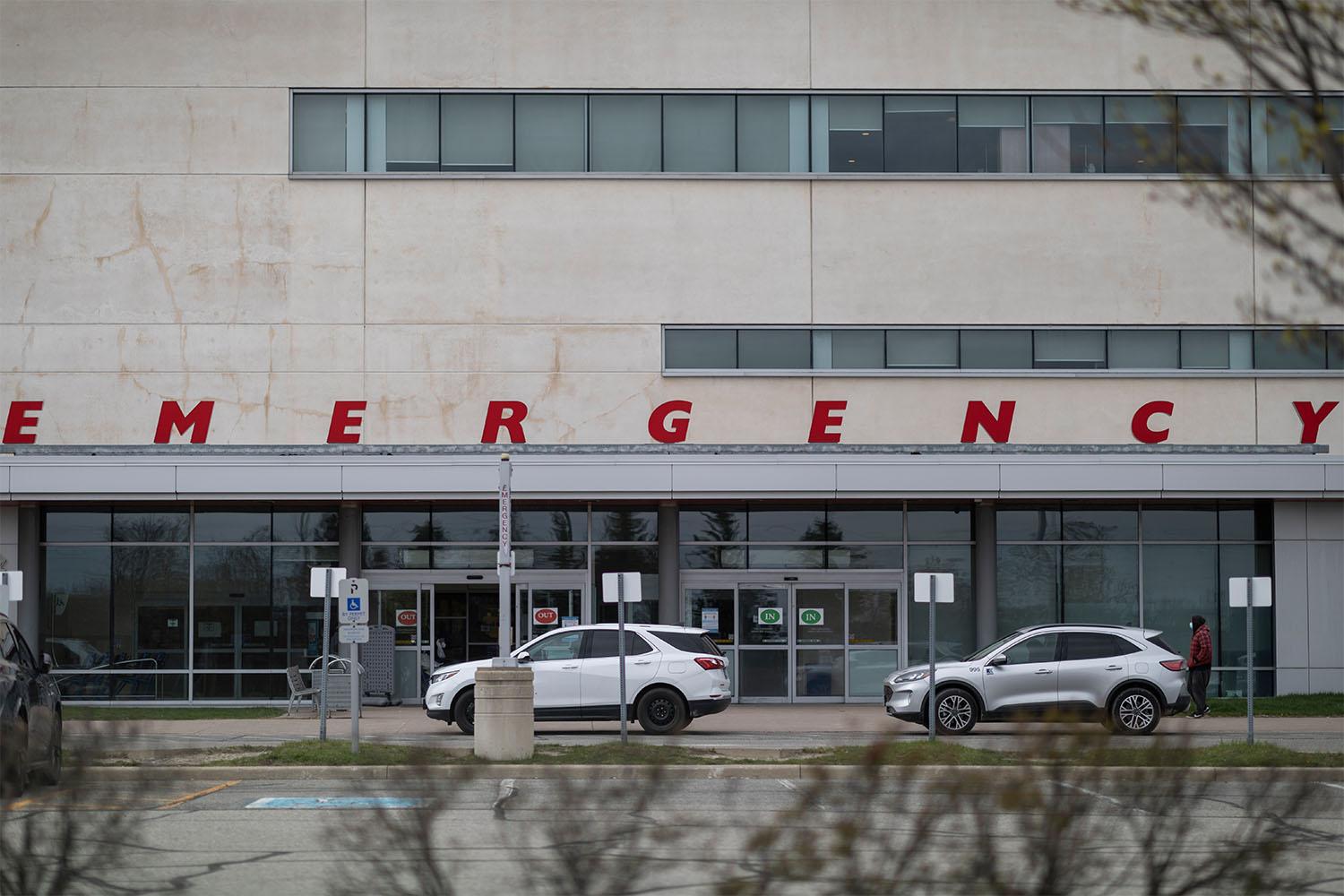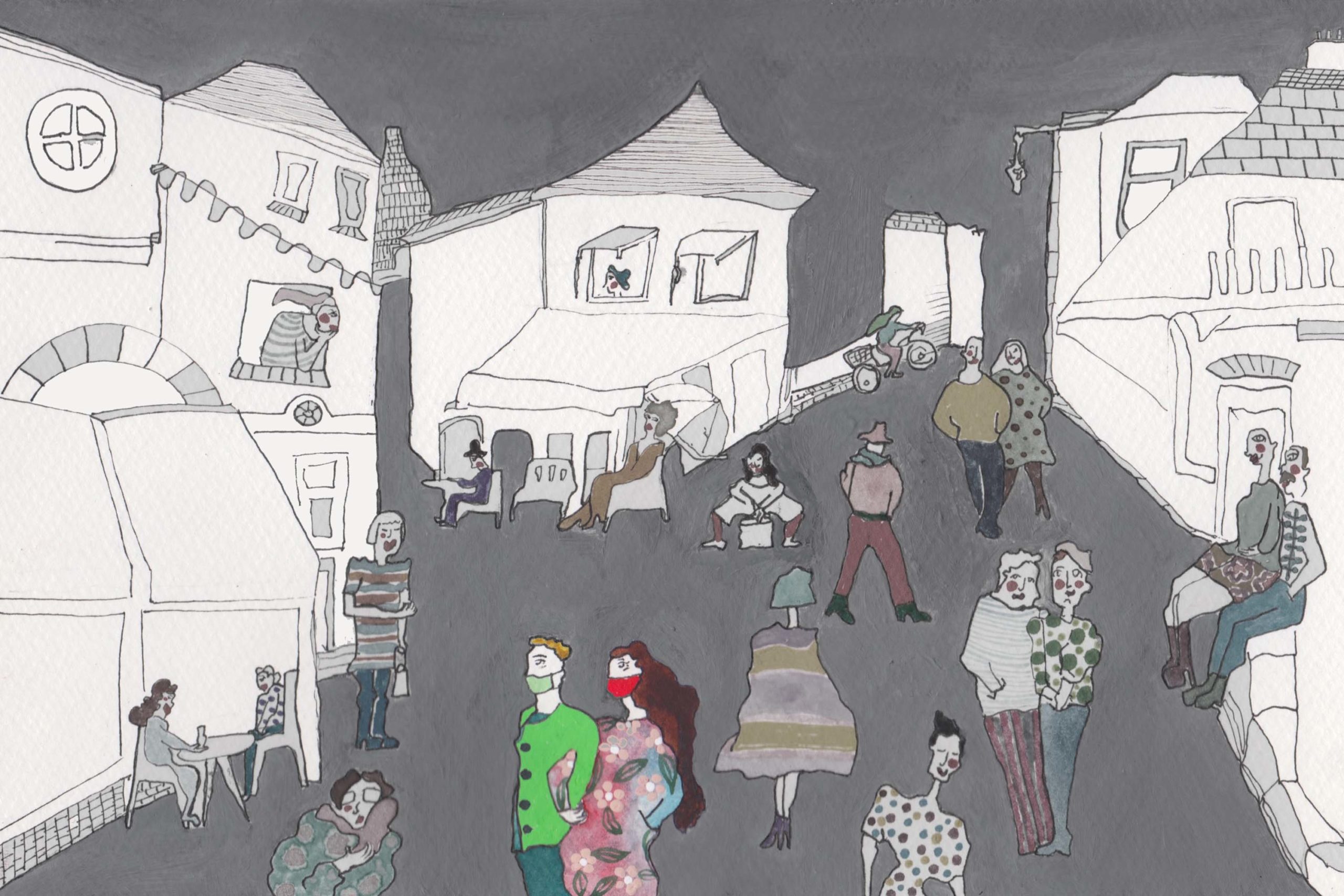
It may have taken a pandemic for Zainab Hassan to give up on public transit, but the decision had been a long time coming.
For the last ten years, the 35-year-old has lived in Etobicoke, near Kipling and Eglinton, which means that most of her commutes take her on the 32 Eglinton West bus—the route with one of the highest rates of delays across all of the TTC’s bus lines. While getting her Master’s degree at York University, she would travel at a snail’s pace for up to an hour and a half to campus, the bus stopping and starting amid traffic and construction. Once, speaking with one of her professors, she realized that his commute was half the time of hers despite being twice the distance because he had access to the subway from his home near Broadview station, and she did not.
Hassan’s frustrations with the system began to pile up. She couldn’t go to campus as often as she wanted; she couldn’t apply to jobs in other suburbs, especially when she became a parent and time became exponentially more scarce and valuable; she was once 20 minutes late to an exam because of bus delays despite having gotten on the bus half an hour early.
Relying on buses is like being trapped, she says. “You are trapped because you need to get to your destination, and you have zero control over how long it will take that bus driver to drive through construction, through traffic…it’s hopeless.”
“And so at some point you start to realize, ‘I don’t want to do this again.’”
Hassan started cutting back on lunches or other expenses here and there, to save money for Ubers. During the pandemic, on the rare occasion she had to get to York University, she’d bite the bullet and pay $30 each way, not out of fear of COVID, but dread of the commute. She found a job that was only minutes away by car, though it would take her much longer to get there by bus thanks to the wait times and unreliability. She set up her life to avoid the thing that had become both the object of her fixation—so much so that she did her Master’s dissertation on the Etobicoke Somali community’s experience of transit use—and the bane of her daily life.
“Why would I invest in a system that’s not investing in me as a priority?” she says. “If you’re making us live in neighbourhoods that have worse access to public transit, what you’re going to see is people who are really poor, who are the working class, use the little money they have to get a car, to Uber somewhere.”
Hassan’s experiences echo those of so many inner-suburban transit users in Toronto. But most people relying on buses in their daily commutes—essential workers, often from racialized and immigrant populations, for whom working from home isn’t an option—can’t afford to make the decision Hassan has. They’re tethered to a neglected and underdeveloped network of buses where transit nightmare stories are the rule, not the exception. Sure, in a decade’s time the Eglinton Crosstown West extension might ease commutes for Etobicoke residents, but in the meantime, construction on the arterial road will only worsen it. And behind this poor service is a system that has been in financial and operational trouble since well before COVID, with an unsustainable revenue model, a muddled decision-making process across multiple levels of government, unbalanced funding priorities that allocate more to creating new projects than actually running them, and a vision of the future that, in dreaming of expanded rail service to the suburbs in a decade or more, is neglecting the suburbs of today and tomorrow.
So when the TTC claims that 2022 is the year they return to pre-pandemic service levels, that’s not enough for inner-suburban riders, nor should it be—the TTC has a lot more to recover from than just the pandemic.

Warden Station in Scarborough, early evening.
There are two facts that transit leaders, policy experts, and advocates alike seem to agree on. The first is that buses are the backbone of the TTC, the mode of transport most often used by the essential workers who keep the city running. Between 2014 and 2020, buses transported more riders through the city than any other form of public transportation—an average of 28 million more riders per year than subways.
And second, the bus system is grossly neglected and under-developed. While we may assign rhetorical value to the city’s buses, that isn’t reflected in the attention and care paid to the network, especially compared to its rail counterparts.
It’s difficult to compare bus and subway delays given their inherently different natures, but to provide some perspective: Scarborough’s Kennedy Station saw more bus delays at its terminal in a single year, 2020, than subway delays at the station in the four-year span of 2018-2021.
And of course, the suburbs are the worst impacted by poor service. The Local’s analysis of bus delay data from the TTC found that of the top ten routes with the highest rates of delays, seven were in the inner suburbs—four in North York, two in Scarborough, and one in Etobicoke. The majority of delays were due to mechanical failure, making up an average of almost 40 percent of delays every year between 2014 and the start of the pandemic. (For this analysis, The Local excluded delays entirely outside of the TTC’s control, like collisions, cleaning, emergency and security services, or visibility, and focused on delays of 5 minutes or more.)
Between 2014 and 2021, the period for which data is available, the 52 Lawrence West bus—the route with the highest number of delays across the system—had an annual average of more than 1,300 delays of five minutes or more. This is ten times higher than the system-wide median for buses. Zainab Hassan’s 32 Eglinton West bus had delays nine times the median.
The TTC declined to comment except to say their data helps them “constantly improve service across the City, particularly in cases where the delays may be within our control. But as is often the case, no two delays are alike.”
“We are always striving to improve on-time performance to build schedules that give our customers predictable and reliable trip planning,” they concluded.
Transit advocate Steve Munro has watched—and blogged, as one of Toronto’s most authoritative voices on public transit—as municipal and provincial leaders debate rail lines, above and below ground, for decades, while little gets done.
“You spend endless years on debates, and then wind up building half of what you might have…and meanwhile, the Dufferin bus is the Dufferin bus: nothing changes,” says Munro. “The majority of riders, forever basically, are going to continue to ride buses. And we have to figure out how to make the bus system move people around—and not just to get them to a subway station.”
With its current funding structure, the TTC doesn’t have enough room in its operating budget to run its full fleet of buses. Last fall, the TTC cut service to 57 bus routes, citing the operator shortage brought on by their newly instated vaccine mandate—though Munro’s own research suggests the service reductions were also in part a cost-cutting exercise, from which the TTC is only starting to spring back. They announced this month that they plan to return service to pre-pandemic levels through the spring.
But pre-pandemic service isn’t good enough, and any improvements are achingly slow. In 2019, the TTC committed to exploring priority bus lanes along five of its busiest corridors—portions of Eglinton East, Jane and Dufferin Sts., Steeles West, Finch East and Lawrence East. To date, only one—Eglinton Avenue East onto Kingston Road and Morningside Avenue—has been completed. Consultations for the second have yet to begin.
“The rate at which it’s going to be implemented is vastly slower than will make any substantial changes, system-wide, in the attractiveness of transit,” Munro says. Meanwhile, unreliability and resultant crowding are rampant.
Part of the crisis comes from the fact that the province is far more interested in funding transit capital, the money used to build new projects and infrastructure, than operations, the budget that actually pays for the day-to-day running of services. Transit funding from both the provincial and federal government is almost entirely for capital costs, like the province’s $28.5 billion subway expansion plan to build the Ontario Line and the Scarborough subway, Yonge North Subway and Eglinton Crosstown West extensions. It looks a lot better to take credit for a new subway line than for repairing a fleet of decade-old buses.
While the city undoubtedly needs new transit infrastructure, there’s a risk that comes with building new developments when the budget to actually operate them—the responsibility for which still falls to the TTC—is so precarious. Shelley Carroll, TTC board member and city councillor for Don Valley North, explains that for new projects, the agreement on how operating will work—who will pay for the operations, or for maintenance—is struck much later into the development process. The agreement for the Eglinton Crosstown, for example, was only ratified in 2021, ten years after construction began. Until those terms are decided, the TTC has little way of knowing how much it will cost them to operate projects that the province chose to build.
“There will come a day where the TTC has to say that we can’t afford it unless the funding formula changes,” Carroll says.“At the moment, we still haven’t been fully funded just to keep the payroll, to have operators run full routes with a third of the ridership. We’re struggling.”
The province, Carroll says, has to understand that if you want a regional system, “you have to pay for it.”
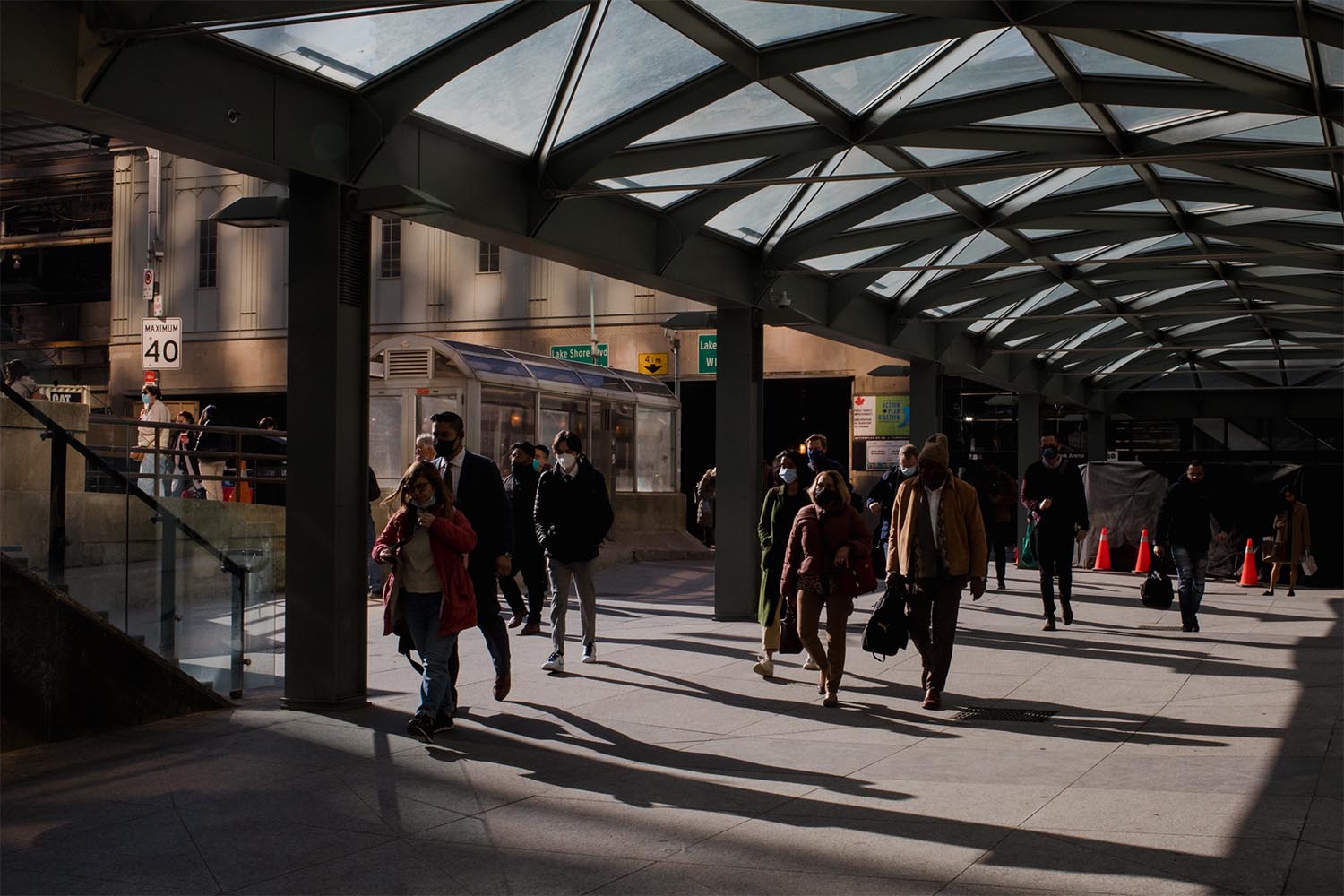
To build a functioning regional transit system, you also have to ensure that it’s working for the riders that need it most. But the current relationship between Metrolinx—which builds the capital projects in question—and the TTC is failing lower-income transit riders who rely on regional travel for their daily commutes.
In March of this year, Metrolinx announced that it was integrating local transit and GO fares in 12 municipalities surrounding Toronto. That means someone in Mississauga, for example, won’t have to pay for local transit if they’re also taking GO. But Toronto has been excluded from the initiative despite the innumerable workers and students who regularly have to commute between Toronto and the rest of the GTA. Prior to that, in 2020, the province eliminated the $1.50 discount for transfers between the TTC and GO, saying that the program was unsustainable because it had exceeded the allotted budget by $9.3 million over two years.
For many of the people travelling between Toronto and surrounding cities, paying a double fare simply isn’t affordable, especially when one of those fares is the more costly GO rate. So they’re forced to take more convoluted, and inevitably longer, trips to and from work.
Vincent Puhakka is one of these people. Growing up in Scarborough, he observed and experienced a whole host of issues to do with transit service in the suburbs; now, living downtown, he commutes to Mississauga for work. Paying the TTC and GO fares is a financial strain, so he often opts to take the TTC and MiWay, Mississauga’s local transit—a trip that takes between an hour and an hour and a half, depending on the day.
This commute away from Toronto for work is becoming more and more common, Puhakka says. “You get a lot of people doing a ‘reverse commute’ like me, but who are in worse situations because they’re going to low-pay warehouse jobs, say…from Etobicoke to Brampton,” he says. “That’s where all the jobs are.”
Puhakka is a volunteer with transit advocacy group TTCriders, and in canvassing and speaking with Scarborough residents, he’s seen how the lack of fare integration has kept low-income residents from being able to access services that are right at their doorstep, especially now with the end of the Scarborough RT.
“One of the problems is you have these GO train stations that actually go to the inner suburbs where there’s no subway, but because you have to pay separate fares, you can’t even transfer—and the GO is just more expensive,” he says. “So people don’t use them as much, though the service is there. It’s not being used.”
Designed and operated in this manner, GO still feels like it’s designed solely for office workers looking to commute downtown, leaving blue-collar workers exactly where you’d expect—languishing on the city’s neglected bus network.
Subscribe
Get our latest stories delivered to your inbox.
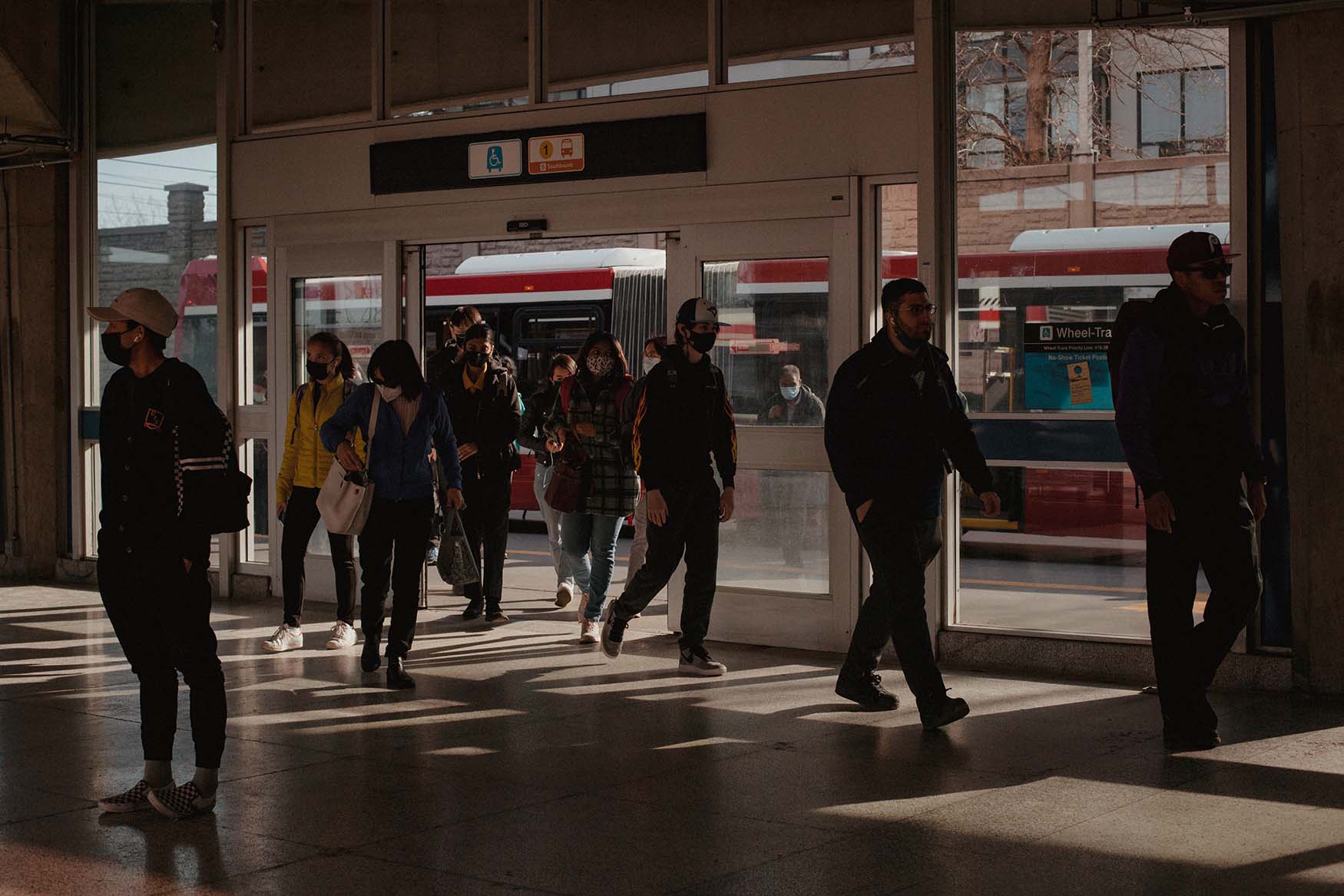
Every facet of this crisis has been building since before the pandemic. The last two years have only exposed and worsened existing vulnerabilities in the system that can all be tied back to the fundamental question of how the TTC is run and funded.
In 2018, transit advocacy organization CodeRedTO released a report that found the TTC to be uniquely vulnerable and inadequately funded compared to other major North American cities’ transit systems. At the time, the organization’s executive director described the system as “hanging on by its fingernails,” because the TTC relies more heavily on the money it makes from fares to fund its operating budget than any of the 12 other comparable cities studied, getting two-thirds of its revenue from the fare box—a rate 15 percent higher than the national average.
In a world of robust and growing ridership in the biggest city in the country, this could perhaps be sustainable—but ridership on the system has been stagnant for the last decade, with growth slowing to a plateau by 2014. All the while, the TTC’s expenses have continued to rise with repair, expansion and labour costs. The system was already facing immense pressure in 2019. Then the pandemic hit.
In the span of a few weeks, the TTC went from being crowded almost everywhere to only being crowded on the bus lines essential workers took to their jobs keeping the city afloat. In the first months of the pandemic, ridership dropped by 80 percent. The TTC was headed off the rails, leading the federal and provincial governments to step in with a total of $1.3 billion in public transit funding in 2020 and 2021.
We’re now two years into the pandemic, and with workers who have the ability to work from home reluctant to return to the office every day, it feels unlikely that we’ll ever again see the same rush-hour crush of commuters threatening to spill right off the platform at Bloor-Yonge station.
In this state of uncertainty, there’s also no way to answer the question of how long the TTC is going to have to rely on emergency funding from the provincial and federal governments. The prospect of the funding being pulled out from under the city’s feet brings back dread-inducing memories of the 1990s, when Mike Harris eliminated provincial funding to the TTC, a financial strain that led to simultaneous fare increases and massive cuts to service, which in turn drove riders away from the system. It took the city a decade to climb out of that hole; if we understand the TTC as standing now at a fork in the road, one of its potential paths leads back to that dark place. But it doesn’t have to be this way.
“What we really need to do,” says Carroll, “is have other orders of government understand that we don’t really recover unless you address the inadequacy of the [funding] formula before the pandemic began.”
The TTC is currently in the process of deliberating its five-year fare plan, which could see increases in fares to meet new budget needs. But in the last decade alone, there have been multiple reports outlining the need instead for greater permanent funding from the province, and from a variety of sources beyond the existing gas tax for transit—a provincial program begun in 2004 that allocates $0.02 per litre of gas to municipal transit services, and which makes up the majority of the province’s funding to the TTC. Reports by Metrolinx, the City of Toronto, the province’s Chamber of Commerce and independent organizations like the Canadian Centre for Policy Alternatives have recommended revenue streams like sales tax, tolls, and vehicle taxes to boost transit funding. Despite the clear need for improved funding, very little has changed: perhaps the closest we’ve gotten is that in 2017, former Premier Kathleen Wynne committed to raising the gas tax allocation for transit from $0.02 to $0.04. That plan was nixed when Doug Ford came into office a year later.

Finch Station bus platform, early morning.
On a Friday in late April, around 4:00 p.m., employees began trickling out of Amazon’s Scarborough warehouse—a massive white slab of a building on Steeles Avenue, at the city’s northeast corner. Over the next two hours they emerged—first alone or in pairs and then all at once, laughing and chatting, as they headed for the bus stops.
On their commutes, the Amazon employees have the choice of either speed or ease-of-access. They can take routes 102 or 53 from the bus stop just a minute away from the warehouse exit. The 53, however, had one of the highest rates of delays on the system, eight times the city-wide median. With Amazon’s discipline system that allots demerit points for things like arriving late—at six points, you can lose your job—any delay is costly.
Or, they can take the 953 express bus, which gets them where they need to go much faster, but which means a 15-minute walk to the bus stop over at Steeles and Tapscott Road. If they’re lucky, sometimes a bus driver will make an unscheduled stop in front of the warehouse upon request—but the workers have learned not to rely on that kindness in their daily routines. “During the summer, it isn’t as much of a problem,” says one employee. “But have you tried doing that walk in the snow after ten hours on your feet?”
Then there’s the problem of off-peak hours: the sparse weekend bus service to the warehouse has left some employees relying on Ubers to get them to their shifts. These are the kind of service issues that appear minor to people who don’t make the commute—but the inconveniences add up, and the solutions feel frustratingly simple. As Shelley Carroll points out, these solutions aren’t implemented because the TTC’s outreach to bus users fails to include lower-income, essential workers who can’t make it to town halls held downtown, often in the early hours of the evening while they’re still finishing their shifts.
Despite the province’s new record-setting investments in public transit, we are still not building a better future for these commuters. Even in a decade’s time, when the Ontario Line and the Scarborough subway extension have been completed, it won’t have an impact on this corner of the city—a growing hub for warehouse jobs that continue to be serviced by bus routes that aren’t quite working for their riders.
As long as we see the suburbs as spaces meant primarily for car users, this problem won’t be addressed. It’s no coincidence that the current government’s transit investments, in the long run, are off-road, don’t interfere with traffic, and are accompanied by separate policies catering to cars and their drivers. With the pandemic having encouraged more first-time car buyers, and research showing that some former public transit riders aren’t interested in ever returning to it post-pandemic, there’s a chance that pandemic recovery will be largely car-based.
Today, we have the opportunity to redefine what normal means to us as a city. The nature of work is changing, as are our priorities as the climate crisis informs our reliance on cars. The cost of living is rapidly rising, pushing the city’s most vulnerable even further out into the margins. Ultimately, the decisions made by the TTC and the province will reveal which riders, and residents, they value most.


